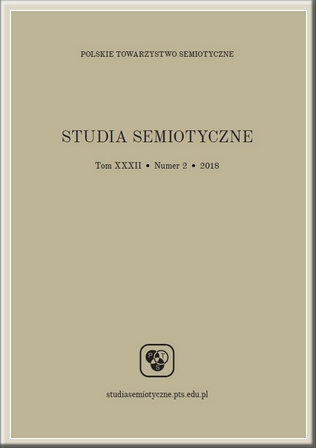Abstract
DOI: http://doi.org/10.26333/sts.xxxii2.06
MICHAEL HELLER
SYNTAX–SEMANTICS INTERACTION IN MATHEMATICS
SU M M A R Y: Mathematical tools of category theory are employed to study the syntax-semantics problem in the philosophy of mathematics. Every category has its internal logic, and if this logic is sufficiently rich, a given category provides semantics for a certain formal theory and, vice versa, for each (suitably defined) formal theory one can construct a category, providing a semantics for it. There exists a pair of adjoint functors, Lang and Syn, between a category (belonging to a certain class of categories) and a category of theories. These functors describe, in a formal way, mutual dependencies between the syntactical structure of a formal theory and the internal logic of its semantics. Bell’s program to regard the world of topoi as the univers de discoursof mathematics and as a tool of its local interpretation, is extended to a collection of categories and all functors between them, called “categorical field”. This informal idea serves to study the interaction between syntax and semantics of mathematical theories, in an analogy to functors Lang and Syn. With the help of these concepts, the role of Gödel-like limitations in the categorical field is briefly discussed. Some suggestions are made concerning the syntax-semantics interaction as far as physical theories are concerned.
Michael Heller
Copernicus Center for Interdisciplinary Studies
The Pontifical University of John Paul II in Krakow
Faculty of Philosophy
ORCID: 0000-0003-1462-6808
References
Angot-Pellissier, R. (2015). The Relation Between Logic, Set Theory and Topos Theory as It Is Used by Alain Badiou. In: A. Koslow, A. Buchsbaum (Eds.), The Road to Universal Logic (pp. 181–200). Basel: Birkhäuser.
Antoine, J-P. (1980). Partial Inner Product Spaces. Journal of Mathematical Physics, 21(8), 2067–2079.
Antoine, J-P., Lambert, D., Trapani, C. (2011). Partial Inner Product Spaces: Some Categorical Aspects. Advances in Mathematical Physics.
Antoine, J-P., Trapani, C. (2009). Partial Inner Product Spaces: Theory and Applications. Berlin: Springer.
Antoine, J-P., Trapani, C. (2010). Partial Inner Product Space Method: A Quick Overview. Advances in Mathematical Physics.
Awodey, S. (2010). Category Theory. Oxford: Oxford University Press.
Bell, J. L. (1981). Category Theory and the Foundations of Mathematics. British Journal for the Philosophy of Science, 32(4), 349–358.
Bell, J. L. (1986). From Absolute to Local Mathematics. Synthese, 69(3), 409–426.
Bell, J. L. (2017). Categorical Logic and Model Theory. In: E. Landry (Ed.), Categories for the Working Philosopher (pp. 113–135). Oxford: Oxford University Press.
Carnap, R. (1937). The Logical Syntax of Language, London: Kegan Paul.
Coherent Logic. (2018). In: nLab. Retrieved from: https://ncatlab.org/nlab/show/coherent+logic
Estrada-González, L. (2014). Complement-Topoi and Dual Intuitionistic Logic. Australian Journal of Logic, 9, 26–44.
Fu, Y. (2015) Category Theory, Topos and Logic: A Quick Glance. Retrieved from: http://charlesfu.me/repository/topos.pdf
Goldblatt, R. (2006). Topoi. The Categorical Analysis of Logic. Mineola, N.Y.: Dover Publ.
Halvorson, H., Tsementzis, D. (2017). Categories of Scientific Theories. In: E. Landry (Ed.), Categories for the Working Philosopher (pp. 402–429). Oxford: Oxford University Press.
Heller, M. (2016). Category Free Category Theory and Its Philosophical Implications. Logic and Logical Philosophy, 25(4), 447–459. DOI: 10.12775/LLP.2016.013
Hem, C. (1966). Philosophy of Natural Science. Englewood Cliffs, N.J.: Prentice-Hall.
Internal Logic. (2018). In: nLab. Retrieved from: https://ncatlab.org/nlab/show/internal+logic
Lambek, J., Scott, J. P. (1986). Introduction to Higher-Order Categorical Logic. Cambridge: Cambridge University Press.
Landry, E. (Ed.). (2017). Categories for the Working Philosopher. Oxford: Oxford University Press.
Leinster, T. (2014). Basic Category Theory. Cambridge: Cambridge University Press.
Low, Z. L. (2013). Logic in a Topos. Retrieved from: http://zll22.user.srcf.net/talks/2013-01-24-InternalLogic.pdf
Mac Lane, S., Moerdijk, I. (1992). Sheaves in Geometry and Logic. New York, Berlin, Heidelberg: Springer.
Marquis, J-P. (2010). From a Geometrical Point of View. A Study of the History and Philosophy of Category Theory. Berlin/Heidelberg: Springer Science+Business Media.
Moerdijk, I., Reyes, G. E. (2010). Models for Smooth Infinitesimal Analysis, New York, Berlin, Heidelberg: Springer.
Putnam, H. (1967). Mathematics without Foundations. The Journal of Philosophy, 6(1), 5–22.
Smith, P. (2007). An Introduction to Gödel Theorem, Cambridge: Cambridge University Press.
Suppes, P. (1960). A Comparison of the Meaning and Uses of Models in Mathematics and the Empirical Sciences. Synthese, 12(2/3), 287–301.
Syntactic Category. (2018). In: nLab. Retrieved from: https://ncatlab.org/nlab/show/syntactic+category
Tsementzis, D. (2015). A Synthetic Characterization of Morita Equivalence. Retrieved from: https://arxiv.org/pdf/1507.02302.pdf
van Fraasen, B. (1989). Laws and Symmetry. New York: Oxford University Press.


